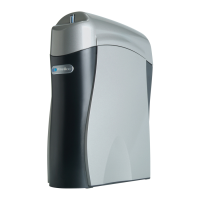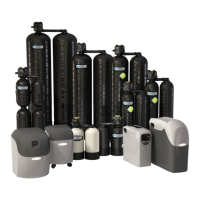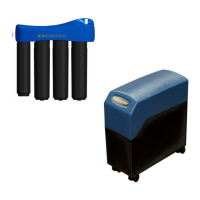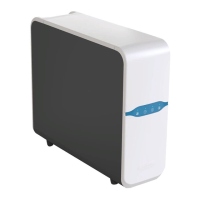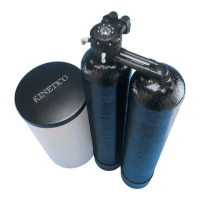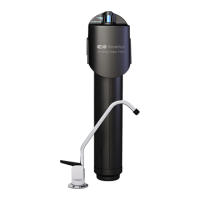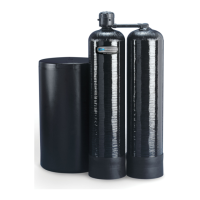25
E. The tap is defective.
F. No water comes out due to rejection. The flow restrictor is
clogged.
5. Production water has high TDS
A. Plugged prefilters.
B. Reverse osmosis membrane at the end of its useful
life.
C. Production and rejection connected backwards.
D. No water comes out due to rejection. The flow res-
trictor is clogged.
E. The new carbon postfilter has not been thoroughly
rinsed.
F. The inlet water has increased its TDS.
6. Smells and flavors in the production water
A. The carbon postfilter is depleted.
B. Production and rejection connected backwards.
C. Increase in the TDS of the incoming water.
7. Leakage or dripping in the tap
A. Water comes out with the tap closed.
8. Leaks in the external connection to the machine
A. Tubes improperly connected in the connectors.
B. Scratched pipes in the sealing area.
C. O-rings in poor condition.
E. Repair or replace the tap.
F. Repair or replace the flushing valve.
A. Replace filters.
B. If the life of the membrane has been too short (less
than 24 months), correct the problem. Replace the
membrane.
C. Correct the connections.
D. Repair or replace the flushing valve.
E. Open the tap and rinse the carbon postfilter for 10
minutes.
F. An increase in TDS of the inlet water will also cause an
increase in TDS in the production water.
A. Replace the carbon postfilter.
B. Correct the connections.
C. Replace the membrane.
A. Fix the tap valve or replace the tap.
A. Check the tightness of all connections.
B. Cut the tubes eliminating those grated areas and re-
connect.
C. Replace the o-rings.

